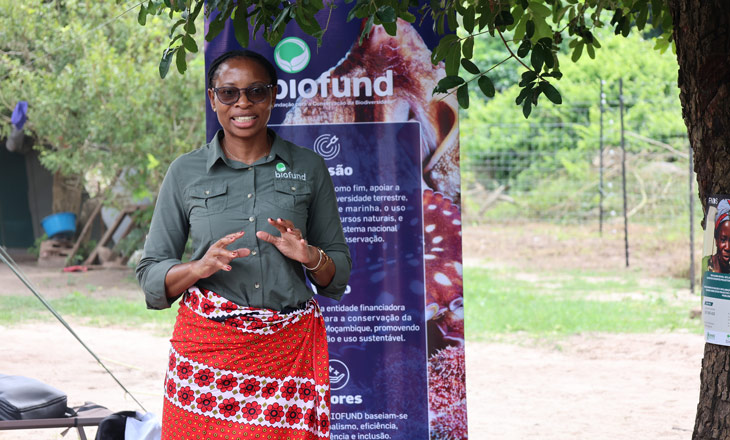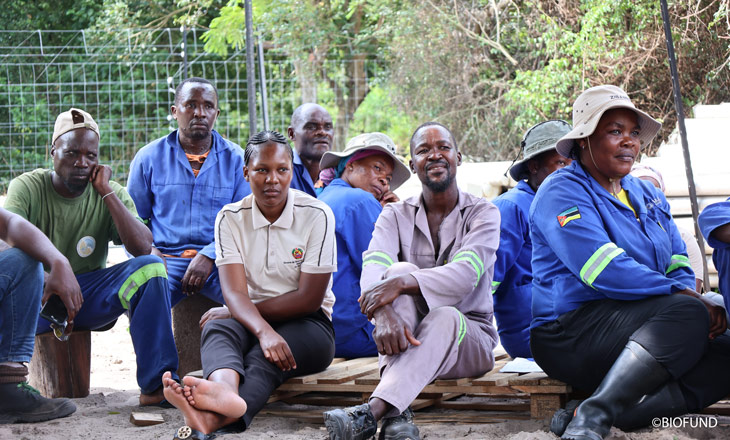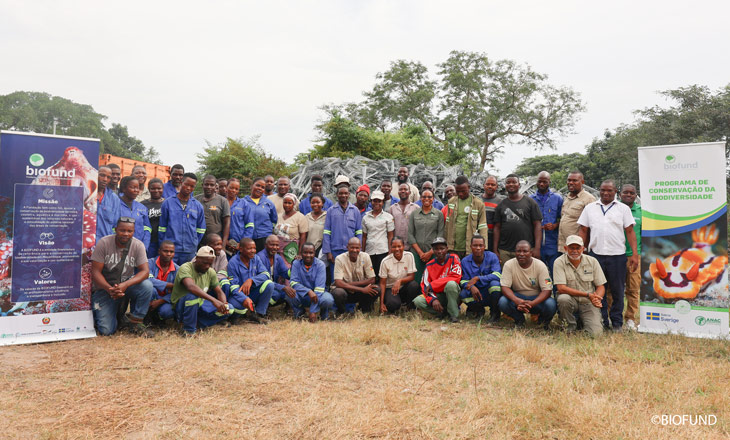In the second week of April 2025, thirty community technicians involved in the construction of a 43 km electric fence in the Muwai Community Conservation Area (Muwai CCA) benefited from training on Environmental and Social Safeguards. The training was delivered in Portuguese and Changana by specialists from the Foundation for the Conservation of Biodiversity (BIOFUND) and the National Administration of Conservation Areas (ANAC), with the aim of ensuring strict compliance with environmental and social standards during the implementation of the infrastructure.
Published at 21/04/2025
30 Technicians Receive Training on Environmental and Social Safeguards in the Context of the Construction of the Muwai Community Conservation Area Electric Fence
During the training, crucial topics were addressed, such as the importance of conserving natural resources, good environmental and social practices in project implementation, Occupational Health, Hygiene and Safety (OHS) measures, the correct use of Personal Protective Equipment (PPE), as well as sensitive topics such as Gender-Based Violence (GBV), Sexual Exploitation and Abuse (SEA) and Sexual Harassment (SH). The beneficiaries were also informed about their rights and duties, the dialogue and grievance mechanism, and were introduced to the Green Line as one of the reporting channels.
The training is part of the Biodiversity Conservation Programme (2023–2027), coordinated by BIOFUND, in close collaboration with ANAC-IP, and funded by the Government of Sweden.
The initiative responds to a request from the Futhi Corridor Community Association, which represents the communities of Huco, Matchia, Madjadjane, Salamanga, Tchia and Massala, also located in the Futi Corridor, with the aim of mitigating the impacts of human-elephant conflict that has affected the region for several years.
With technical support from Conserve Global, Maputo National Park and the Maputo Environmental Protection Area (Maputo EPA), the project seeks to reduce human and agricultural losses, promote harmonious coexistence between communities and elephants, and foster the development of sustainable economic activities such as ecotourism.
It is important to highlight that this is the first project at national level involving the construction of an electric fence to establish a community conservation area. This initiative reinforces the relevance of active community involvement in biodiversity protection and in the promotion of sustainable and inclusive development.





